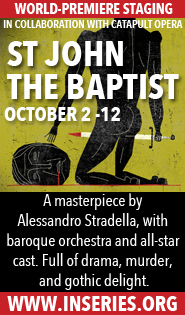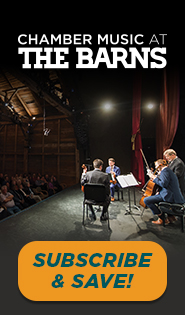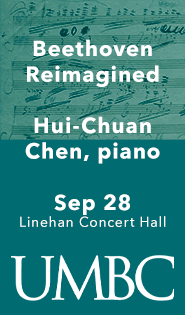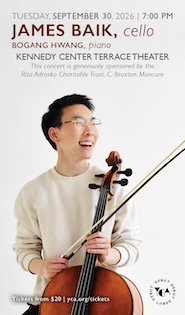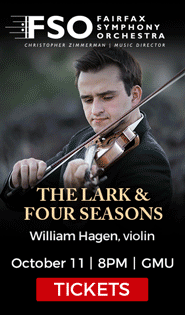Justin Taylor opens Capriccio Baroque festival with a feast of Bach, Italian style
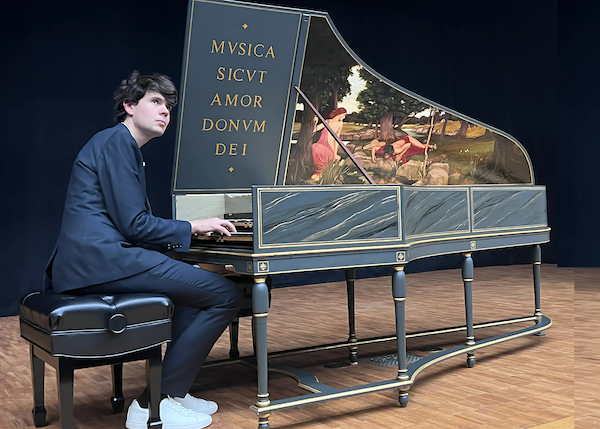
Justin Taylor performed at the French Embassy Friday night for Capriccio Baroque. Photo: CB
On Friday night at the Embassy of France, Justin Taylor kicked off Capriccio Baroque’s first festival, which will feature performances by two other renowned French harpsichordists, Pierre Hantaï and Christophe Rousset, over the next four weeks.
Taylor’s fascinating performance Friday proved that he belongs in that rarefied company. The young harpsichordist drew much of Friday’s repertoire from his most recent album, “Bach & L’Italie,” which surveys the Italian influence on J.S. Bach’s writing; the album, in turn, features some of the same repertoire as a concert Taylor performed with Capriccio Baroque in 2023. No one would object to hearing Taylor playing this music again, but he added some new pieces to give a fresh feel as well.
The opening of the concert mirrored the album, as Taylor juxtaposed an extract from Alessandro Scarlatti’s Toccata in D minor with the Fantasy from Bach’s Chromatic Fantasy and Fugue. Taylor’s light touch on the keys made the arpeggios in the Scarlatti sound like linen rustling in the wind, yet each individual note had presence and heft, and the chromatic dissonances sounded genuinely unsettling. The Chromatic Fantasy, played without pause after the Scarlatti, had similar virtues, with Taylor’s performance showing how Bach infused the daring chromatic style with his own harmonic logic.
The most direct evidence of Bach’s love of the Italian style is his transcriptions of Italian concertos for harpsichord, and Taylor presented two on Friday. In the concerto after Antonio Vivaldi’s L’estro armonico, Op. 3 No. 9, BWV 972, Taylor made the music sound thrillingly fluid, with fast tempos that never sounded breathless in the outer movements and beatific rippling arpeggios in the Larghetto.
Taylor separated the concerto transcriptions with what he said were his two favorite sonatas by Domenico Scarlatti, and he played them with manifest affection. He took a slower tempo than some in the Sonata in A Major, K. 208, giving it an affecting poise and leaving plenty of room for well-judged ornamentation in repeats. Taylor romped through the Sonata in B Minor, K. 27, at a much faster pace but still took care with every note, including the frequent crosses of the left hand over the right.
In Bach’s transcription of a concerto for oboe and strings by Alessandro Marcello, BWV 974, Taylor said that “the ornaments added by Bach make the harpsichord sing.” Many have played Bach’s keyboard works on piano, but this performance showed how the harpsichord fits it best — the lack of sustaining tone is a feature, not a bug, with keyboard writing this florid, and the melodic lines sounded crisp and shimmery with the harpsichord’s attack, as expertly rendered by Taylor. (The harpsichord was the 2011 copy by Colin Booth of a 1720 instrument by J.S. Fleischer heard at many Capriccio concerts; it sounded in fine form on Friday.)
Another pairing that appears on the CD, juxtaposing movements from a Benedetto Marcello sonata and another Bach concerto, led into a riveting performance of Bach’s Toccata in E Minor, BWV 914. With no pause between the three pieces, the slithery chromatics of the excerpts seemed to explode in the Toccata, with Taylor relishing the wildness; the fugues in the second and fourth sections seemed to ground the piece as a whole. Taylor kept his contrapuntal lines clean and legible, especially in the concluding double fugue.
Two pieces from Antonio Valente’s 1776 “Intavolatura de Cimbalo,” the first published book of harpsichord music, provided an effective palate cleanser after the toccata, with harmonies less adventurous and more modal. Taylor played the driving rhythms and fast tunes with gusto.
Bach wrote his famous Italian Concerto, BWV 594, a few decades after he made most of his concerto transcriptions; Taylor played it to conclude this program, and it was fascinating to hear how the Italian style both lived on and grew into something new in Bach’s hands. Here Taylor made skillful use of the upper and lower registers to vary textures and evoke ripieno and tutti groups. The famous tunes of the outer movements sparkled with joy, while the Andante second movement had an unassuming nobility, affecting without being maudlin, that anchored the whole concerto.
For encores, Taylor said he had to play something French, and he delivered rousing performances of “Les Sauvages” from Jean-Philippe Rameau’s Les Indes Galantes, with variations composed by Jean-François Tapray, and Joseph-Nicolas-Pancrace Royer’s “Tambourins.”
Festival Capriccio 2024 continues with Pierre Hantaï performing Bach’s Goldberg Variations on November 7. capricciobaroque.org
